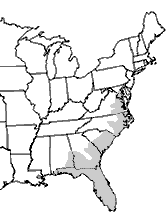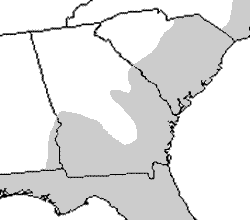Greater Siren (Siren lacertina)
Greater Siren (Siren lacertina)



Description: The greater siren is a large, eel-like salamander with external gills, a flattened tail, and two well-developed forelimbs (hind limbs are absent). Adults commonly measure 50–70 cm, but individuals may reach nearly 1 m in total length, making them one of the largest salamanders in North America. Coloration is typically olive green to gray with yellow or green flecking along the sides and back. Smaller greater sirens can be distinguished from sympatric lesser sirens by counting costal grooves between the armpit and vent: greater sirens usually have 36–40, whereas lesser sirens have 31–35. Amphiumas may appear similar but can be told apart by their round tails, lack of external gills, and presence of four tiny limbs.
Range & Habitat: The greater siren occurs across the Atlantic and Gulf Coastal Plains from Virginia south through Florida and west into eastern Alabama. Isolated populations may exist in southern Texas and northeastern Mexico (Rio Grande valley), though further genetic study is needed to confirm their identity. They inhabit a wide range of wetlands but are most often found in slow-moving or still waters with dense vegetation and deep organic muck. Their ability to aestivate for extended periods—up to 5.2 years in one laboratory specimen—allows them to persist in seasonal wetlands.
Habits: Breeding has been observed in late winter (February–March). Fertilization is thought to be external, though the exact mechanism remains undocumented. Greater sirens may produce audible sounds when disturbed, including a yelp likened to the call of green treefrogs (Hyla cinerea) or ducklings, and occasional clicking noises. Their diet includes a variety of aquatic invertebrates and small vertebrates, with a possible preference for snails and other mollusks in some regions. Captive individuals can live up to 25 years, though wild longevity is unknown.
Conservation Status: The greater siren is considered common across much of its core range but occurs patchily at the periphery. Comprehensive population data are lacking, and the species’ overall status remains poorly understood.
